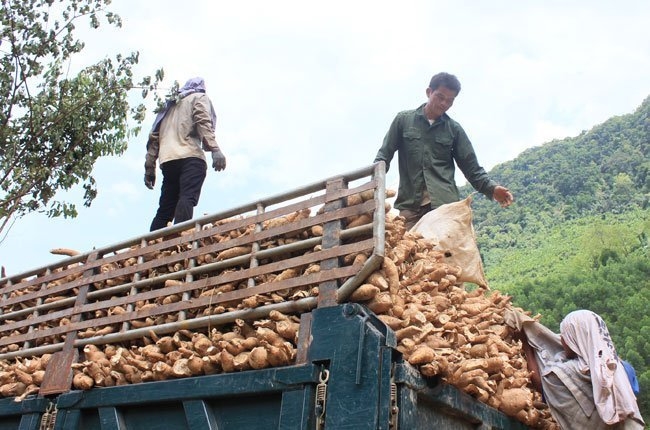 Economy
Economy

Exports of cassava and cassava-based products have declined significantly this year, according to the Ministry of Agriculture and Rural Development.
 |
| Exports of cassava and cassava-based products have declined significantly this year, according to the Ministry of Agriculture and Rural Development (MARD). — Photo thesaigontimes.vn |
HCM CITY — Exports of cassava and cassava-based products have declined significantly this year, according to the Ministry of Agriculture and Rural Development (MARD).
At 2.6 million tonnes worth US$700 million, exports were down 14.5 per cent year-on-year in volume and 22.5 per cent in value. According to the ministry’s report, much of the fall can be attributed to decreasing demand, particularly in China.
China accounted for nearly 86 per cent of the exports, but according to the General Department of Việt Nam Customs, they were down 32 per cent in value year-on-year.
Malaysia bought 15.1 per cent more, but shipments to most other markets like South Korea, Japan and the Philippines were down.
Nghiêm Minh Tiến, deputy chairman of the Việt Nam Cassava Association, said exports to China through unofficial channels have stalled after that country closed almost all its borders in recent months.
In the first half of the year it imported cassava mainly from Thailand, he said.
Besides, China’s devaluation of its yuan against the dollar has caused difficulties for Việt Nam in exporting cassava to that market, he said.
Dương Phương Thảo, deputy head of the Ministry of Industry and Trade’s Export-Import Department, said when working with her ministry recently, the Chinese side said it would facilitate purchase of Vietnamese goods but still tighten cross-border trade, citing anti-smuggling and quality control.
Hoàng Trung of the Plant Protection Department said cassava businesses should export to China through official channels to reduce risks compared to border trade.
According to the MARD, cassava production has increased sharply in the last 20 years.
The country currently has some 551,000ha under cassava, mainly in the central, Central Highlands, south-eastern and northern mountainous regions, with the crop now being an important source of income for small farmers.
Cassava yields and production in several provinces have more than doubled thanks to the planting of new high-yield varieties and the adoption of more sustainable production practices.
Many cassava processing factories have invested in upgrading their technologies and installing wastewater treatment systems, reducing pollution.
Starch produced from cassava root is mainly used as food, but is also a raw material for many industries including pharmaceuticals.
Việt Nam was one of the world’s largest cassava exporters last year, earning $1.32 billion from exports, a year-on-year increase of 15.8 per cent.
Although the industry has flourished in recent years, excessive reliance on the Chinese market is a risk it faces. — VNS




